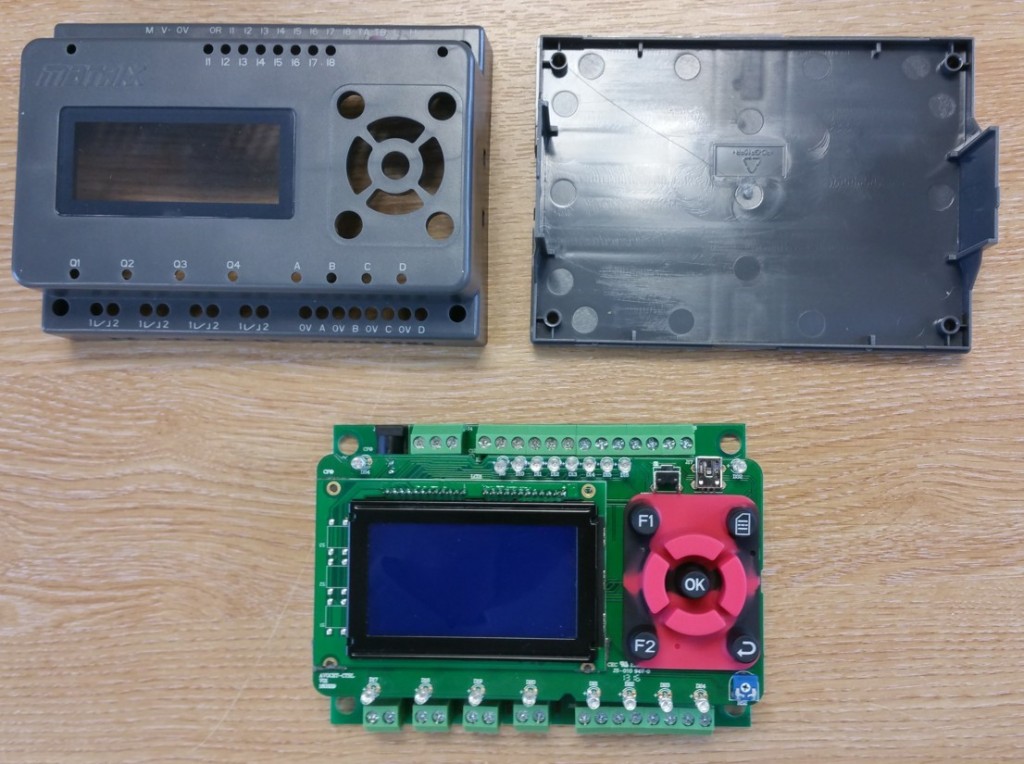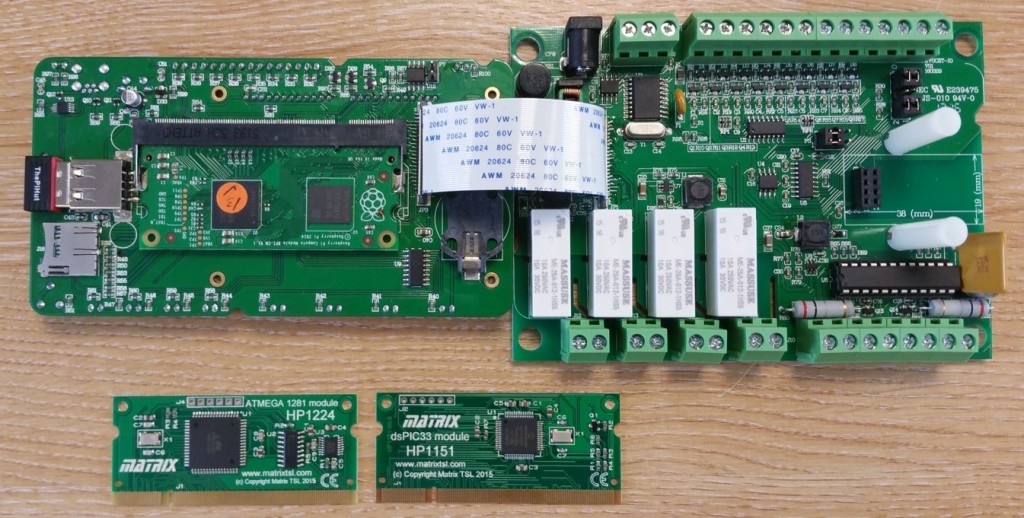MIAC with Raspberry Pi

MIAC Raspberry Pi is rather special – and strange if you are used to embedded development tools. The Pi version is always fitted with a Wi-Fi module – but no on-board sockets for mouse, keyboard or HDMI video for programming. The Pi version is programmed with remote desktop software. This is really neat: on start-up you use the on-board keypad to set up the unit’s IP address. Then using remote desktop software, you connect to the RPI MIAC using a PC, MAC, or LINUX machine as a dumb terminal, via your Wi-Fi router, to program and interact with the MIAC. This is really clever and works quick enough to make you think that you are directly connected to the Pi. It’s a great technology: you can program a MIAC in England from Singapore over the internet, or you can program several MIACs in different locations in a factory from your desk. As the Pi compute module is basically a LINUX computer, it has bags of power and you can use Python, C or any other language running on Linux. The on-board memory stores your programs and you can fit a micro SD card if you need more space or you want to log data.
There are currently 2 versions of MIAC Raspberry Pi –
MIAC Raspberry Pi with Wi-Fi – MI5769
MIAC Raspberry Pi with Wi-Fi & Bluetooth – MI6693
Both MIAC have fully specified industrial electronic controller, designed to operate with industrial control voltages. Housed in an attractive rugged, anthracite grey plastic moulding and with two physical mounting options, the MIAC is designed to give electronic engineers a rugged programmable controller based on a range of microcontroller variants. This MIAC is based on a Raspberry Pi compute processor module and both feature:
- Raspian/Debian RTOS
- Remote online access development
- Cross-compiler development
- MIAC specific interface Kernel modules pre-installed
- 8 x 10 bit 0-12v analogue inputs
- 4 x relay outputs
- 9 to 24 VDC operating voltage
- Keypad (9 keys)
- 5 line by 20 character graphic display with backlight illumination
- 4 solid state high current drivers (5.6A total)
- Real Time Clock with super-capacitive backup
- Internal microSD card slot
- Serial communications including RS232, RS485 and CAN
- Wi-Fi fitted as standard.
The MI6693 also has bluetooth fitted internally.
The MIAC range has an impressive specification: 8 analogue or digital inputs, 4 relays (up to 240VAC and 10A), 4 transistor outputs (24V, 2.8A total 5.6A) with PWM, USB, CAN bus, RS232, RS485, internal real time clock, SD card, graphical backlit blue LCD display (capable of displaying 5 lines of 20 characters), and on-board keypad. Bluetooth and Wi-Fi communication modules as optional extras. All contained in a custom moulded DIN rail compatible box. That’s a huge specification and there are some impressive and unique technologies in there.
Let’s take a closer look inside:


First of all, construction: The solution is a three board solution – all the power electronics is contained on the main board which connects to the processor board via a multi way ribbon cable. The main board has four chunky relays and the ST L6206N IC power driver driver chip: this is a DMOS low voltage drop device, which allows up to a whopping 2.8 amps per channel – with a max of 5.6 amps total. These outputs are short circuit protected and current limited to their maximum allowable output. On the top left side of the main board you can see Microchip’s MCP2515 CAN bus chip and TI’s VP230 CAN transceiver chip: these two act as an interface between the host chip’s SPI bus and the CAN bus. The main board also includes various buffer devices and a field of diodes offering input protection.
The top board includes the processor module in a SODIMM socket configuration. The photo shows the Raspberry Pi computer module on the top board as well as Matrix’s own dsPIC, and Arduino SODIMM modules beneath. This is a clever idea: the Dev guys have taken the RPI compute module form factor and created new microcontroller boards using the same pin out to make sure that all the versions of the MIAC use common circuit boards to keep costs down. The top board includes real time clock circuitry, optional battery cell for backup, mini SD card slot, and a USB slot for a low cost Wi-Fi dongle.
We have a Raspberry Pi, getting started guide here to help with your new MIAC and how you can use it, along with a datasheet which will provide you with all the technical data you need for your project!
How much does it cost?
The MI5769, MIAC Raspberry Pi with wifi, retails at £269.00 + VAT
The MI6693, MIAC Raspberry Pi with wifi & bluetooth, retails at £299.00 + VAT.
3,406 total views, 4 views today

